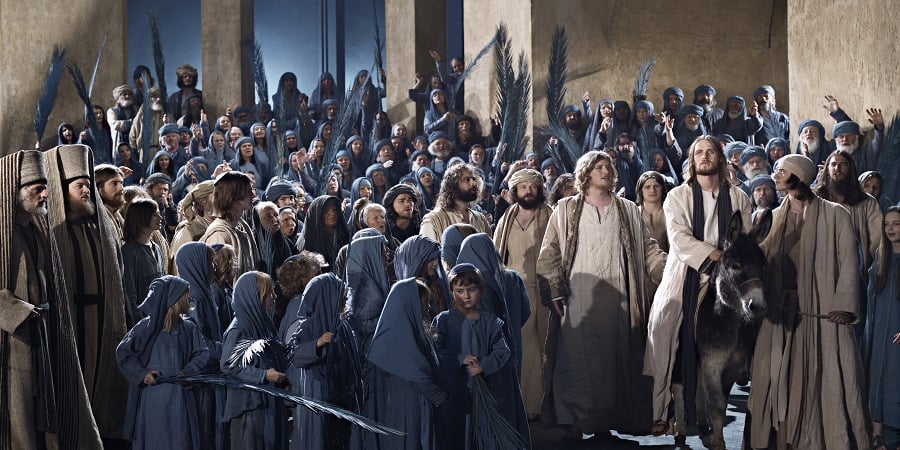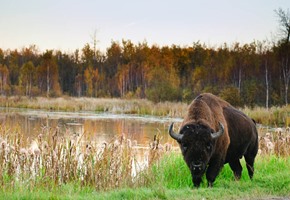What do the black death epidemic, that ravaged much of Europe during the 17th century, and an epic five-hour play performed over 100 times in the space of a few months have in common? Very little most would think, but then most would be wrong…
Once every ten years, an unassuming village in the heart of the Bavarian Alps hosts an event that draws in hundreds of thousands of visitors. This community's moving re-enactment of Christ's crucifixion and subsequent resurrection, known as the Passion Play, is a production to rival that of many Hollywood blockbusters, presenting both the tragedy of death and the promise of life.
During the Thirty Years War Oberammergau was afflicted with bubonic plague, along with the rest of the continent, and as the town's population dwindled, the local government vowed that they would perform the 'Play of the Suffering, Death and Resurrection of Our Lord Jesus Christ' every ten years if God was to spare them any further affliction. The death rate slowed to a halt in 1633 and the following year, the townsfolk performed the first Passion Play on a stage erected above the graves of their countrymen who had been claimed by the disease. The Oberammergau villagers believed that they had witnessed a miracle and have held up their end of the bargain ever since, so far staging the decadal event forty-one times.
The play is performed every ten years between May and October on a 4,500 seat open-air stage. The presentation includes a cast of over 2,000 amateur actors, musicians, and stage technicians, all of whom are long-time residents of the village. The townsfolk spend a full two years in painstaking preparation for the event, designing imaginative costumes, building elaborate stage props, and memorising lines. To give you an idea of how seriously Oberammergau takes the Passion Play, the local government issues a 'Hair Decree', put into effect a full year before the first performance, which requires all men taking part in the play to stop shaving to allow their facial hair to grow - now that's dedication!
When the curtain finally rises, thousands of participants bring the story of Jesus of Nazareth to the ears and eyes of an enthralled audience over a number of hours, (the length of the play gives even the unabridged Hamlet a run for its money) all whilst dealing with whatever the elements throw at them atop the imposing open-air stage, built for the purpose in 1900. (For the comfort of the audience though, seats enjoy all mod cons such us underfloor heating). While 4,700 spectators are wowed by the action on stage, behind the scenes over 1,000 costumes made in the village are stored in 16 wardrobe rooms. Stage equipment and prop rooms are also located backstage, and the table and chairs used in the Last Supper scene are true antiques dating back 200 years.
The play itself unfurls over around sixteen acts and covers the period of Jesus entering Jerusalem and continues up to his death on the cross and his subsequent resurrection. This latest offering, under the direction of Christian Stückl and his artistic team, including stage designer Stefan Hageneier and musical director Markus Zwink, reflects this tremendous community achievement. For ten months the villagers will rehearse the newly revised script, which has been adapted from the Joseph Alois Daisenberger text, written between 1860 and 1870, whilst the orchestra and singers study the exceptional music created for the performance by the composer Rochus Dedler in 1820. A three-hour interval provides plenty of time to enjoy a meal served in a local restaurant before the dramatic culmination of the second half.
The Passion Play 2022 promises to deliver another breathtaking performance, set as it is against the backdrop of the scenic Ammergau Valley. The town of Oberammergau is to be found burrowed into the state Bavaria, about 56 miles south of Munich, and surrounded by mountains, meadows and forests. Although Oberammergau is most famous for its Passion Play, this kind of idyllic setting makes for a delightful destination in its own right. History is very much at home here, and many of the houses are decorated with large frescoes dating back over 200 years. Sticking with the religious theme, these often depict biblical scenes or saints. With forests being a noted feature of the area, it is unsurprising that the town is also well known for its hand-crafted woodcarvings.
All of these elements add up to what can only be described as a 'see it to believe it' experience; the only performance art of its kind, seats sell out years in advance and each decade is eagerly anticipated the world over.





